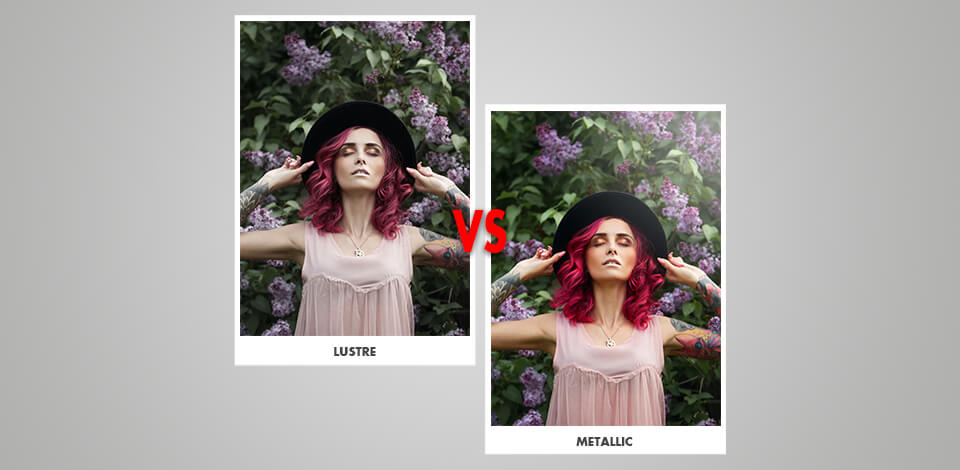
Regardless of whether you choose to print photos at home or delegate that task to a service, one of the first aspects you’ll have to think about is the type of paper that you’re going to pick for your pictures. Discover the key characteristics of lustre vs metallic paper types and learn which option is better suited for your prints. Find out if it’s true that metallic photos are more durable and a more appropriate choice for landscape images and whether lustre paper offers more accurate skin tone reproduction while being less reflective than other printing options.
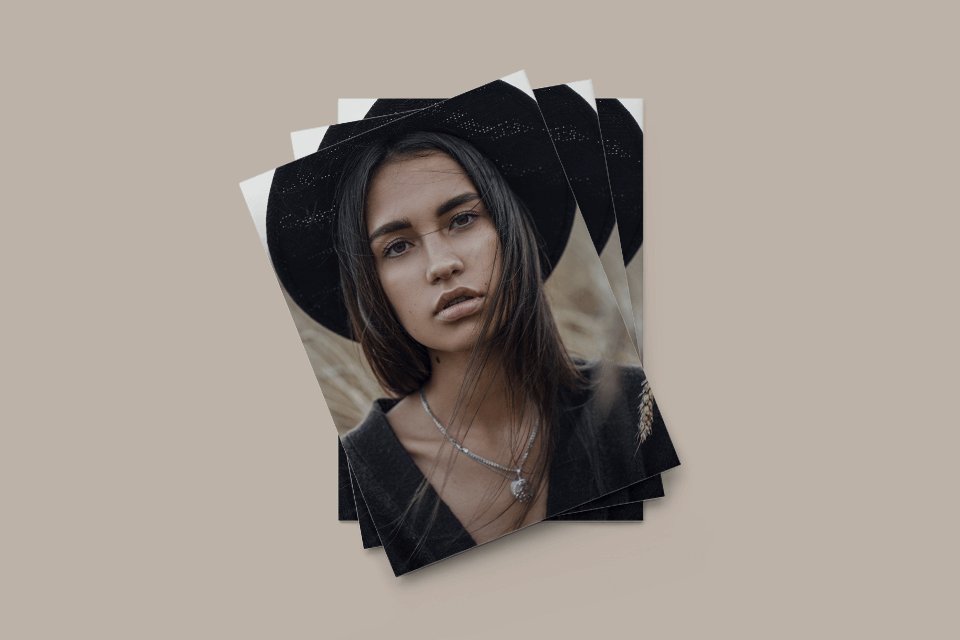
Lustre photo paper represents the middle ground between two other types of photo paper: glossy and matte. It offers the sturdiness and softness of matte photos and the shine and rich colors of pictures printed on glossy paper. As a result, you get a professionally-looking photo with beautiful colors and texture that doesn’t reflect a lot of light and can be comfortably viewed when framed under glass.
Because of the provided natural colors, soft tones, and artsy look, lustre paper can be used for an array of purposes including portfolios, gallery prints, wedding albums, and much more. It’s a terrific fit for portrait, landscape, and fine art photos while also being a great option for B&W photos because of its deep blacks.
Lustre prints also come with a protective finish that makes them resistant to fingerprints and moisture. However, since we’re still talking about photo paper, they’re not exactly suited to be hanged in high-humidity spaces like bathrooms.
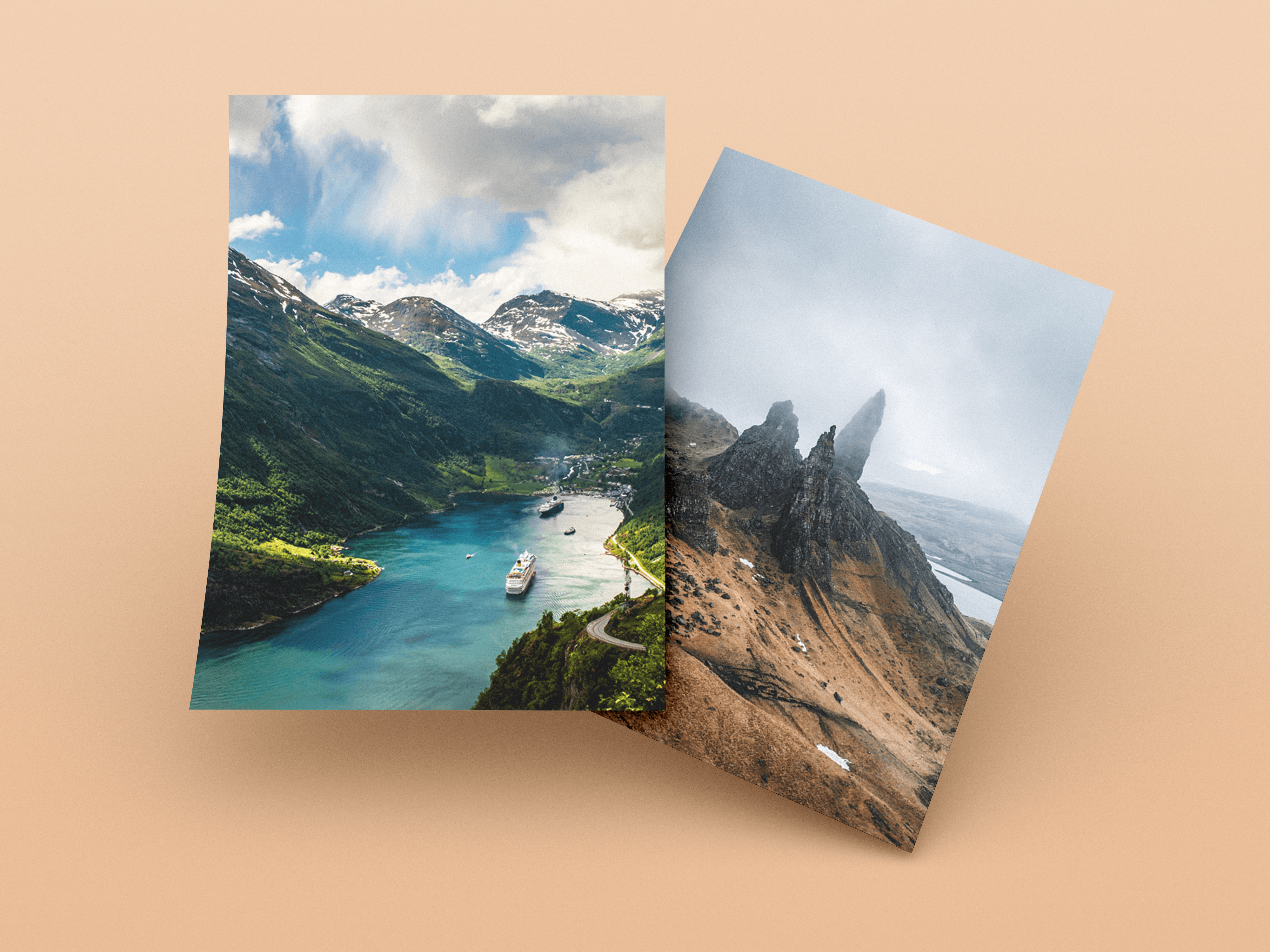
Metallic photo paper comes with a pearlescent effect that is integrated into the surface and enhances your pictures with an eye-catching brilliance. Such paper offers a 3D-like effect while also adding a sense of warmth and color depth that you won’t find in any other printer paper type. The produced colors are vibrant and saturated, which is one of the main reasons why some photographers prefer this finish over other options.
Another benefit of metallic paper is its unparalleled durability. Such photos are resistant to tears, curling, and scratches but they are prone to fingerprints. Metallic prints are highly-detailed and sharp but since they have a bit of shimmer, it’s advised to frame them without glass or simply hang them unframed.
Despite the undeniable appeal of this photo paper type, it should be noted that it’s only suitable for select genres, with the main ones being landscapes and cityscapes. I advise against approaching photo printing services to print portraits on metallic paper since the produced skin tones aren’t going to look natural at all. Meanwhile, a metallic photo of the city at night will look simply stunning.
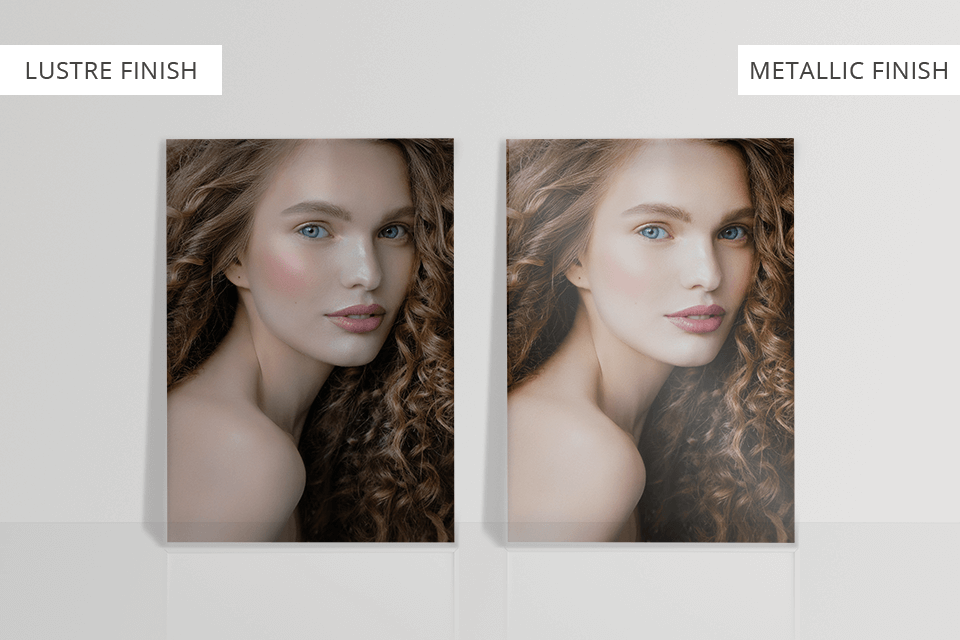
It’s hard to draw direct comparisons between the participants of the metallic prints vs lustre prints battle. In short, metallic photo prints provide saturated, rich colors, a great deal of shimmer and glossiness, and an impressive level of detail. They are also usually quite expensive, can be produced in large formats, and are hung unframed. Such photos are significantly more durable than their lustre counterparts and they are also the optimal choice if you’re interested in a glossier paper that makes the subject of the photo pop.
However, if you want to frame your photo, then metallic paper isn’t a good option unless you’re okay with not using glass. Remember that you can get the best results by using metallic finishing on landscape and city photography that has a lot of colors but doesn’t prominently feature any people.
Lustre is a fantastic middle-ground option and one of the most versatile finishing types out there. Such paper offers a pearl-like texture that makes it a great choice for portrait and wedding shots. One of the biggest benefits of going with this finishing type is the offered fingerprint and smudge resistance. Such photos also don't suffer from glares and can be framed under glass before being hung on a wall. You'll have no trouble viewing the hung picture from any angle, which is why lustre prints are often the go-to choice for professionals and enthusiasts who want to display their photos professionally.
If you’ve only recently started learning how to print photography, then you should know that lustre and metallic aren’t your only options so if you want to make an educated choice, you have to learn about two more paper types.
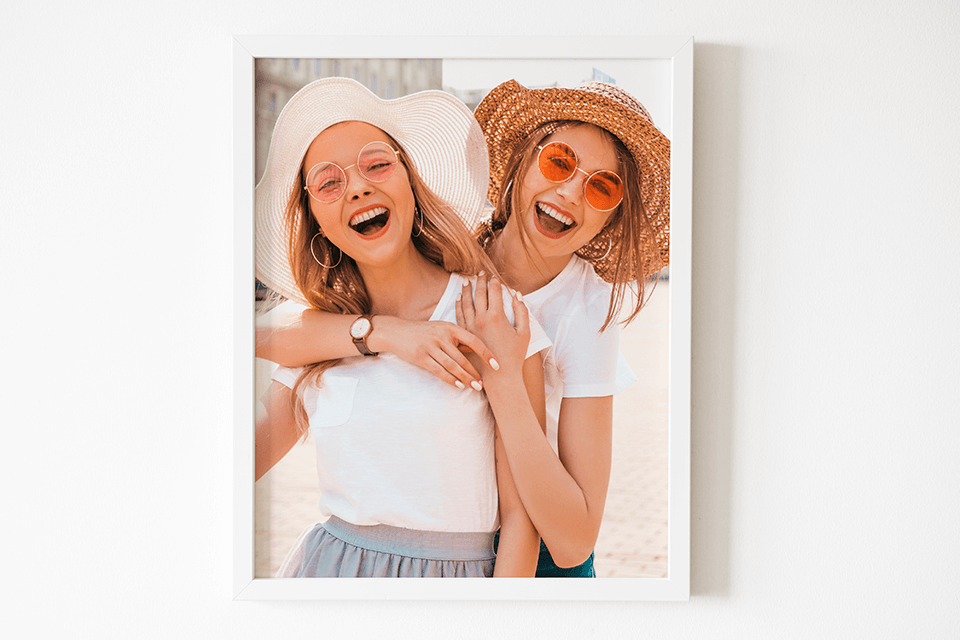
Matte finish paper is among the most widely used photography print options. It looks grainy, has a nice texture, and is completely glare resistant, meaning it doesn't reflect any lighting and is perfect for framing under glass. This type of finishing also doesn’t get smudged or fingerprinted easily so if you want to pass your photos around a lot, you can’t go wrong with matte prints.
Matte paper is a versatile option that can be used with both types of photo printers for photographers: inkjet and laser since it doesn't have a thick, coated layer. Such printed photos have a subtle grainy texture that makes their details more pronounced. The produced colors aren’t as vibrant as in glossy pictures and the overall sharpness is also lower. However, if you already own a glassed frame and want to use it, then glossy printing isn’t even an option.
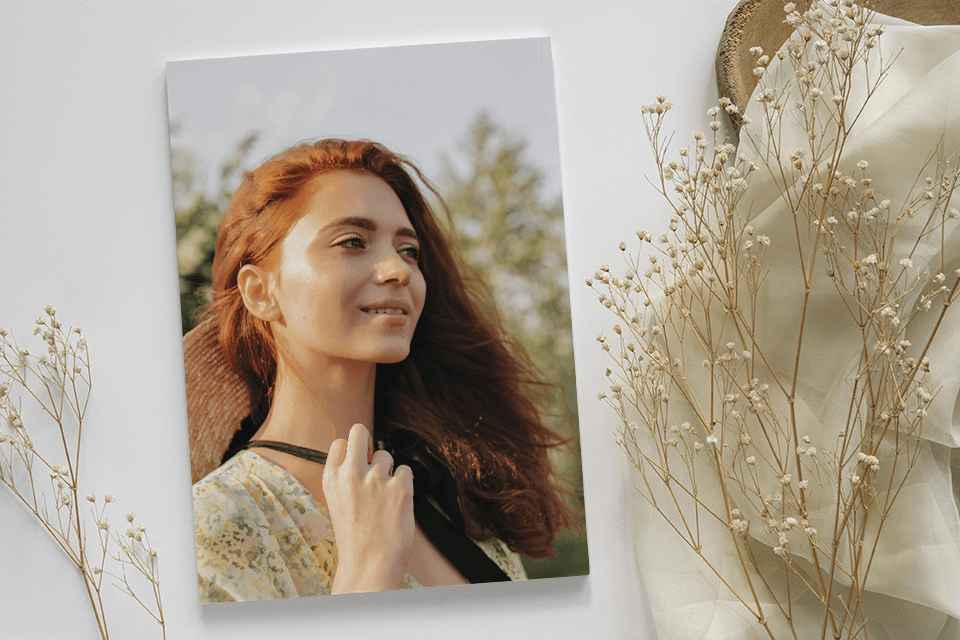
Glossy photo paper is the optimal choice if you want to enjoy eye-catching, rich colors. Such finishing also adds a somewhat glamorous feel to the picture while its intense shine highlights the contrast between the bright and dark parts of the image.
Glossy paper is also perfect for bringing out as much detail as possible while increasing the sharpness, which is possible due to the absence of any texture. The lack of texture is also a drawback since it makes glossy paper highly reflective. As a result, it’s hard to view glossy photos in direct sunlight, which is thankfully not an issue if you plan to store them in a photo album instead of hanging them on a wall.
Glossy finishing is also prone to fingerprints and smudges and isn’t suitable for framing under glass since the amount of created glare will make it nearly impossible to see what’s depicted in the photo. That said, if you value rich colors and high sharpness above everything else, glossy is still probably the best option you have.
Glossy photos are extremely shiny while lustre finishing can be best described as semi-shiny. Glossy pictures also offer richer colors while lustre prints are better for reproducing natural skin tones. Lastly, lustre photos have the advantage of being fingerprint, smudge, and scratch-resistant, which isn't the case with glossy finishing.
When discussing the matte vs glossy photos battle, professional photographers typically give the edge to the former because of its lack of shine. Professionals like to showcase their work in a refined manner that ensures the viewers aren’t distracted by the glare created by glossy paper. Additionally, since many photographers like to frame their work behind glass, choosing matte paper becomes a no-brainer.
Lustre, satin, pearl, and semi-gloss photo paper are essentially the same thing, with industry professionals commonly referring to luster as "E-Surface".
Experience suggests that metallic finishing is the perfect choice for pictures of metals, reflections, vibrantly-colored scenes, landscapes, and B&W shots. You can enjoy the best results when using it for photos with a broad range of colors and a high level of detail.
The texture on matte paper is more pronounced compared to lustre finishing, which makes it less reflective at the cost of duller colors. Lustre paper offers a bit of shine that helps achieve richer colors, which make it perfect for portrait and fashion pics. Meanwhile, a matte finish is the favored paper type of most enthusiasts of black and white shots.